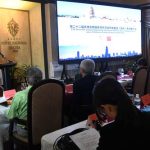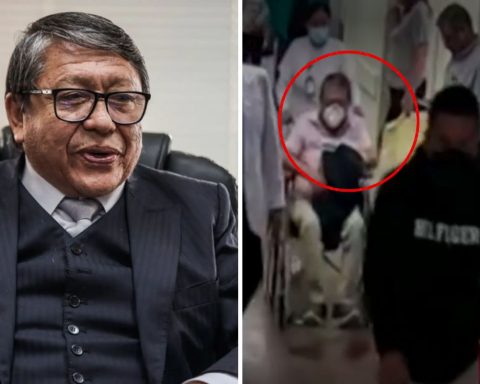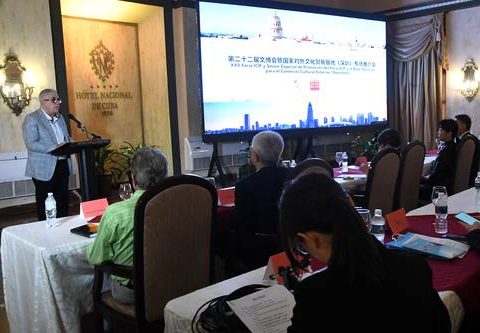55 years after the first human heart transplant worldwide, cardiology specialists considered that it was a “historic milestone” that allowed “prolonging the quality and quantity of life of patients” with heart failure and stressed that this procedure continues to evolve with 3,800 interventions per year in the world and an average of 100 in Argentina.
On December 3, 1967, South African surgeon Christiaan Barnard performed the world’s first heart transplant on Louis Washkansky, a 54-year-old merchant, who was bedridden at the Groote Schuur public teaching hospital in Cape Town for heart failure and acute diabetes.
In Argentina, the first heart transplant was performed by surgeon Miguel Bellizzi on May 31, 1968, at the Clínica Modelo de Lanús., but the recipient died at 96 hours. Twelve years later, on May 24, 1980, cardiologist René Favoloro managed to perform a successful transplant at the Güemes Sanatorium in the City of Buenos Aires.
“Every time a family decides to donate, I think they are making a milestone in the life of the one who is waiting for a heart, a kidney, a liver; that’s why we consider it a daily milestone”Vanessa Gregorietti, cardiologist
“Barnard is a world-renowned figure because he changed the history and prognosis of terminal heart failure in patients who no longer had a therapeutic option. Heart transplantation was born as an option not only to prolong the quantity but also the quality of life for these patients “, told Télam Daniel Absi, cardiovascular surgeon and deputy head of the Division of Heart Failure, Heart Transplantation and Mechanical Circulatory Assistance of the Favaloro Foundation.
Likewise, Vanesa Gregorietti, a cardiologist, member of the Argentine Federation of Cardiology (FAC), told this agency that what happened in 1967 was “a milestone in history” not only with what has to do with heart transplantation but also with “everything that implies the possibility of giving life through a transplant, but every time a family decides to donate, I think they are making a milestone in the life of those who are waiting for a heart, a kidney, a liver; that’s why we consider it a daily milestone without detracting from the pioneer that was Barnard”.
“The paradigm of if there is a heartbeat there is life has changed”
The world’s first heart transplant was performed by thirty surgeons, including Barnard’s brother, and the operation lasted five hours. The donor was Denise Ann Darvall, a 25-year-old office worker, who was struck by a motorist and suffered a crushed skull.
Despite the fact that the transplant was a success and the heart began to beat after its implantation, the recipient died of pneumonia eighteen days after the procedure.
“Washkansky’s death was the result of our own mistakes and inexperience in handling complications,” Barnard said in an interview on The Dick Cavett Show in 1970.
“Heart transplantation was born as an option not only to prolong the quantity but also the quality of life of these patients”Daniel Absi
The surgeon was criticized for using the heart of a brain-dead victim when there were no laws to do so, but he argued that “a patient is dead when his brain is dead.”
On this point, surgeon Daniel Absi from the Favaloro Foundation remarked that “the paradigm of if there is a heartbeat there is life has changed and it is no longer considered, the death criteria have changed. Now there is the definition of brain death independent of the heart beating in the donor”.
Washkansky’s death did not deter Barnard who on January 2, 1968, he performed the second transplant. This time the recipient was the dentist Philip Blaiberg, and the donor, Clive Haupt. On this occasion, the transplanted person lived for almost 2 more years, exactly 563 days.

A transplanted person can live 15 years
Currently, according to data from the International Society for Heart and Lung Transplantation (ISHLT), 3,800 heart transplants are performed annually worldwide.
In Argentina, 80 heart transplants were performed this year -with an annual average of 100- and there are around 140 patients on the waiting list to receive a heart.
“The Justina Law or Law 27,447 on organ, tissue and cell transplantation improved the figures where we have reached a peak of 120 heart transplants,” said Gregorietti.
Although specialists acknowledge that the implant technique has not changed much, they do point out that scientific progress in immunosuppressive drugs increased the survival of patients.
“A milestone was the use of cyclosporine and we currently have new immunosuppressants that make it possible to improve the management of patients from the point of view of organ rejection, where 90% survive the first year”, indicated Absi.
In this sense, Gregorietti recognized that although the International Society details that a transplanted person can live for around 15 years, the truth is that “With the care and advances in medicine, this number can be greatly improved.”
“In fact, I have patients who turned 33 years old after heart transplantation,” he added.
Barnard passed away on September 2, 2001, at age 78, after a severe asthma attack.


















